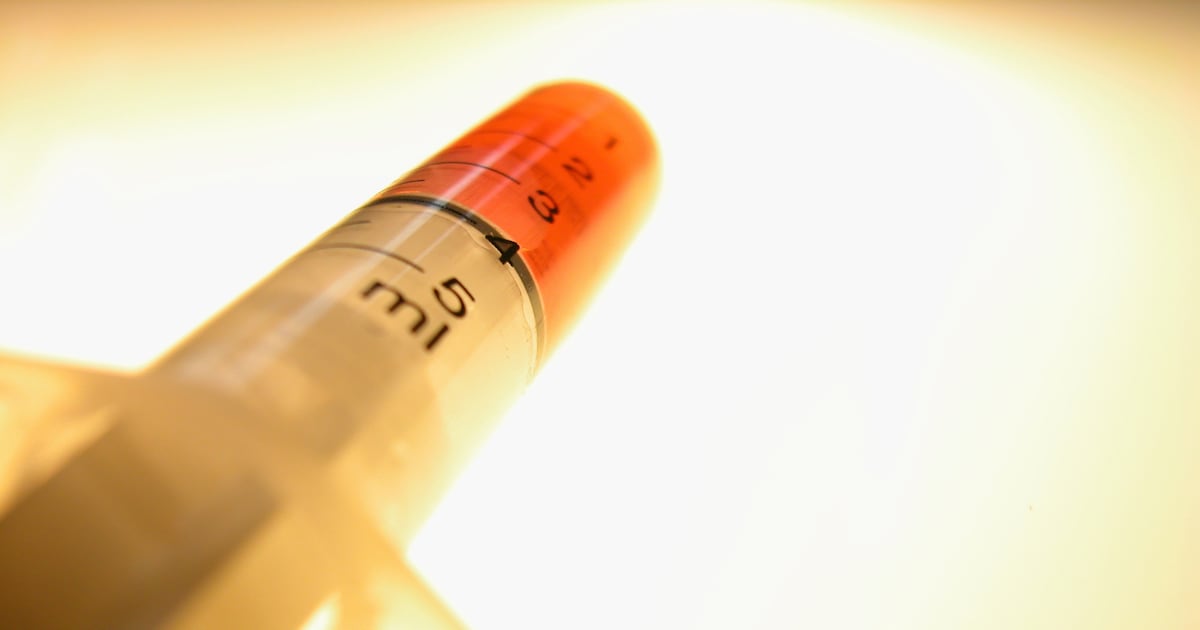Science
Liquid Biopsies Revolutionize Cancer Detection with Non-Invasive Tests

The landscape of cancer detection is evolving with the introduction of liquid biopsies, a non-invasive method that shows promise in identifying and monitoring cancer through simple blood tests. Traditionally, biopsies have been a necessary but often painful procedure for patients, providing vital information about tumours. However, liquid biopsies aim to change this by offering a more comfortable alternative that could enhance early detection and treatment.
Dr. Stuart Edmonds, executive vice president of mission, research, and advocacy at the Canadian Cancer Society, emphasizes the importance of understanding cancers through traditional biopsies. He notes that while these procedures can be uncomfortable and sometimes painful, they remain essential for oncologists. “They help doctors understand cancers better, so they’re an important tool in oncology,” he says.
Liquid biopsies are designed to scan for specific biomarkers in bodily fluids, primarily blood, which can indicate the presence of cancer. This technique is gaining traction in health centres across Canada, providing a more accessible option for patients. “Many health centres in Canada now offer liquid biopsy as part of cancer diagnosis and care,” adds Dr. Edmonds.
Advancements in Liquid Biopsy Technology
These new screening tools are not only cost-effective but also reduce patient discomfort. Dr. Peter Jianrui Liu, co-founder and CEO of Oxford Cancer Analytics (OXcan), has developed a blood test specifically for lung cancer, which has one of the highest mortality rates in Canada, leading to over 20,000 deaths annually. Early detection is vital; however, lung cancer often remains asymptomatic in its early stages, making timely diagnosis difficult.
Liu’s personal connection to cancer has driven his commitment to this research. “I was motivated to identify early-stage biomarkers in the bloodstream after experiencing cancer-related loss in my family,” he states. His team meticulously analyzed over 5,000 types of proteins, identifying 20 biomarkers that can indicate lung cancer with more than 90 percent accuracy.
The economic implications of early detection are significant. Liu explains that identifying cancer at an earlier stage not only saves lives but also reduces healthcare costs, as late-stage treatments are typically more expensive.
Broader Applications and Future Potential
The potential applications of liquid biopsies extend beyond lung cancer. Companies like mDETECT, co-founded by Dr. Irsa Wiginton, are focusing on the ten cancers with the highest mortality rates, including pancreatic and ovarian cancers. Their tests analyze DNA fragments found in the bloodstream, particularly in late-stage cancers, to monitor tumour growth or shrinkage.
The affordability of these tests, such as mDETECT’s lung cancer test priced at approximately $500, allows for more frequent administration. This accessibility enables oncologists to make quicker decisions regarding treatment efficacy, particularly when costly therapies fail to deliver results.
“What these tests do is offer timeliness and options,” Dr. Mueller, co-founder of mDETECT, explains. The company aims to develop tests for early detection of critical cancers, fundamentally altering cancer treatment approaches. This is especially beneficial in rural areas where access to specialized care may be limited.
While current efforts focus on specific cancers, there are aspirations within the industry to create liquid biopsies capable of screening multiple cancers simultaneously. Toronto-based Adela is among those exploring this concept.
Despite the promising advancements, challenges remain, such as the risk of false positives, which can create anxiety for patients and strain healthcare resources. Nevertheless, Dr. Edmonds remains optimistic about the future: “We’re going to have amazing information,” he asserts.
The integration of molecular testing with advancements in medical imaging and artificial intelligence is set to enhance the effectiveness of cancer prognostics and therapies. “Institutions have invested a lot of money into cancer research, and we’re at a point now where we’re starting to see that research make it into the clinic,” Dr. Edmonds concludes, marking a hopeful outlook for cancer detection and treatment.
-

 Science3 months ago
Science3 months agoToyoake City Proposes Daily Two-Hour Smartphone Use Limit
-

 Top Stories3 months ago
Top Stories3 months agoPedestrian Fatally Injured in Esquimalt Collision on August 14
-

 Health3 months ago
Health3 months agoB.C. Review Reveals Urgent Need for Rare-Disease Drug Reforms
-

 Technology3 months ago
Technology3 months agoDark Adventure Game “Bye Sweet Carole” Set for October Release
-

 World3 months ago
World3 months agoJimmy Lai’s Defense Challenges Charges Under National Security Law
-

 Lifestyle3 months ago
Lifestyle3 months agoVictoria’s Pop-Up Shop Shines Light on B.C.’s Wolf Cull
-

 Technology3 months ago
Technology3 months agoKonami Revives Iconic Metal Gear Solid Delta Ahead of Release
-

 Technology3 months ago
Technology3 months agoApple Expands Self-Service Repair Program to Canada
-

 Technology3 months ago
Technology3 months agoSnapmaker U1 Color 3D Printer Redefines Speed and Sustainability
-

 Technology3 months ago
Technology3 months agoAION Folding Knife: Redefining EDC Design with Premium Materials
-

 Business3 months ago
Business3 months agoGordon Murray Automotive Unveils S1 LM and Le Mans GTR at Monterey
-

 Technology3 months ago
Technology3 months agoSolve Today’s Wordle Challenge: Hints and Answer for August 19









